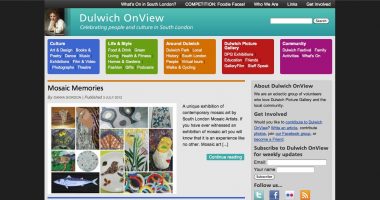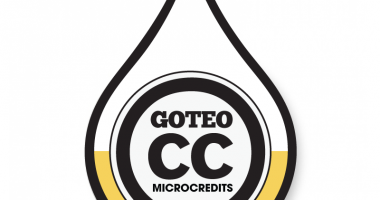
Moon Jellyfish (Aurelia aurita). cliff1066™.
As in Spain debate rages over the transparency law, new governmental initiatives are promoting transparency practices in different sections of the public administration. Three months ago it was the turn of the cultural institutions, and this was met with a certain nervousness among the country’s museums and cultural centres, who had never previously been required to render accounts via their websites. But beyond being obliged to share certain data, the institutions should discover that offering open data is not only in tune with a public that is increasingly asking for access to information, but that it may also become a new form of dialogue that promotes commitment and innovation.
Within the public administration context, transparency is a mechanism that helps prevent corruption, enabling the public to learn about the inner workings of the institutions and how the funds that these receive are managed. Although not a new concept, within the framework of the Web 2.0 and the datification of practically everything, form organisations to humans, the activation of transparency mechanisms is taking on special importance. On the one hand, technology affords us the possibility of recovering, storing and sharing extraordinary quantities of data. On the other, it allows the existence of platforms from where those data are distributed (Open Data Bcn) and others where the public can demand access to the information that concerns them. Organisations such as Transparency International, for example, monitor access to public information with a clear focus on the fight against corruption and on activating accountability processes. In Spain, the citizens’ foundation Civio seeks to contribute towards recognition of the right to access to information, so that more people can request, access and use data.
In June of this year, the Instituto de Arte Contemporáneo (Contemporary Art Institute – IAC) launched a programme called “Transparency in the Artistic Sector”, which obliges contemporary art centres and museums that are totally or partially funded from the public purse to make their data open and available to the public on their websites. Furthermore, the IAC has created a table of categories that allow compliance with this initiative to be measured by assigning points to the institutions according to whether or not they have shared information with respect to: Who?: information on the organisation and the people working in it; what?: information on what the organisation does, on its lines of action, activities and services; and how and how much?: information on how they carry out these activities and services, what their cost is and how they are managed. According to this initiative’s promoters, one of the objectives of the transparency ranking is to help institutions to be more efficient when managing their resources and to ensure that the public has access to information regarding their performance.
Nobody likes being assessed, and even less so if the categories used as the basis for the assessment have been defined without any participation by those who are to be judged. The transition towards more transparent practices may be a complex process that involves the orchestration of the different departments of the institutions as well as decisions regarding how to present the data so that they translate into information that make sense for the public. But it is a necessary transformation: in 2010, the Fundación Compromiso y Transparencia (Commitment and Transparency Foundation) published the report “Through the Looking Glass. Transparency on the Web of Spanish Museums”, which placed in evidence the opacity with which, in general, Spanish museums were managing their information. According to the research, for example, year after year barely 2% of Spanish museums were publishing their strategic plan, only 20% made information available relating to their decisions on acquisitions and loans of their collections; and not one of the institutions studied published the complete profile of their management structure, workforce and members of their board of trustees.
Beyond the data that they are obliged to share or not, the truth is that some cultural institutions have discovered that sharing open data through their websites can be an excellent way of establishing new forms of dialogue with the public, encouraging people’s participation and even triggering cultural innovation. In English-speaking countries, the practice of putting internal information at the disposal of the public has been going on for more than a decade: the British Library in London has published its Annual Report & Accounts on its website since 1999, and it also includes on its website all kinds of data that may be of use to the public or to other institutions. The Indianapolis Museum of Art, for example, has communicated with the public since 2008 via a section on its website called “dashboard”, where it publishes open data in real time, not only related to the institution’s accounts, but also the energy consumption in the building, the artworks currently on exhibition, the value of the museum’s endowment, the average time spent on visits to the website, etc. On the website of the Rijks Museum it is possible to access its entire collection in high resolution: do you want to launch an app with that content? Set up an exhibition or create your own little masterpiece? You are welcome!
Share or we’ll be looking under your carpet
It seems that the debate no longer revolves around sharing data or not sharing them. In a world of “Open Government”, Wikileaks and more recently StrongBox (the new platform of The New Yorker that can be used to send confidential documentation anonymously to journalists), data and transparency should go hand in hand. The storm kicked up by Edward Snowden’s revelations on irregularities committed by the US National Security Agency, better known as the NSA, reveals at least two crucial phenomena: that secrecy tends to lead to abuses of power and that the general public, increasingly, is demanding transparency.
Citizens are in hot pursuit: if you don’t provide your data, it’s your loss. Some months ago a new initiative that uses the possibilities of technology in pursuit of transparency caused a media frenzy. From the privacy of his own home, a young programmer made an app available to all iPhone and Android users that allows consumers to use their smartphone camera to scan supermarket products and discover their origins. That initiative is Buycott, a tool for discovering what products are directly or indirectly related with conservative millionaires Charles and David Koch, two brothers who control the second largest private company in the US, Koch Industries.
So why take the trouble to programme an app to boycott a mega-corporation? The Koch brothers were set to finance proposals destined to stop legislation on climate change in California, campaigns in Wisconsin to limit the power of the unions, as well as promote their political vision through frequent donations to organisations that instigate conservative policies. Buycott aims to put this information in view of consumers so that they can have the knowledge and autonomy necessary to decide whether they want or not to buy from companies that support causes that they consider morally questionable. The brand-new app for alerting consumers is not an isolated initiative. Project Provenance, which will open to the public in a few weeks, allows companies to “tell the stories” behind each of their products (who made it, where and why) so that consumers can make informed decisions. Provenance is a platform for transparency constructed based on a collection of open data.
The desire for greater levels of transparency, as well as for punishing those companies or institutions that implement ethically and morally questionable policies, has further driven citizens’ protests such as that which condemned Monsanto for its use of Genetically Modified Organisms. “March Against Monsanto” started out as a Facebook page and came to inspire protests in 52 countries. Platforms such as Change.org, School of Data, What Do They Know? (UK) and Legco Hansard Parser (Hong Kong), allow people to create petitions to obtain access to information or promote practices that favour transparency. And they are growing in number.
It seems inevitable that companies and public administrations will have to recognise this groundswell and find creative ways of incorporating the demands of a body of citizens who want to have access to data (in many cases, their own data). And this can only grow: as we deploy more networks of sensors to obtain data about everything that composes the urban ecosystem and we incorporate personal informatics (Nike+ Fuelband, FitBit, etc.) into our lives to quantify each of the processes of our body, citizens are pushing actively for greater transparency and their concerns grow regarding privacy issues. What type of data do you produce or collect? How can you show them to me so that they are useful for me? What are you using them for and how can I use them?
Transparency helps create trust, a major advantage in an interconnected world where the payback will be reputation. Trust builds social capital, a key component in the wealth of all communities. Transparency is smart.






Leave a comment